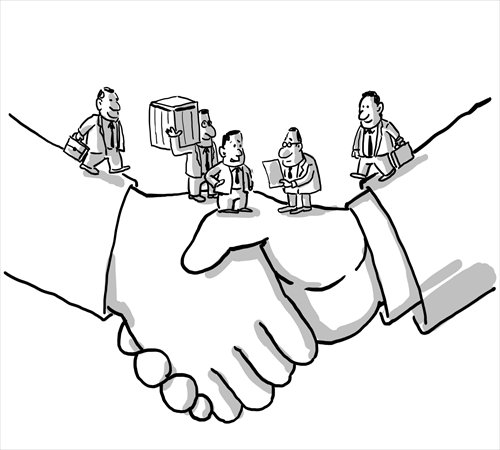HOME >> OP-ED
Openness can enliven New Delhi’s trade
By Ding Gang Source:Global Times Published: 2014-6-25 19:03:01

Illustration: Liu Rui/GT
Since Narendra Modi, newly sworn-in Prime Minister of India, took office, the country's foreign policy has been moving eastward. In the foreseeable future, India will enhance its economic and trade relations with its neighbors to the east.The Modi government has already set the boosting of the economy as the top priority. To achieve this goal, India has no other better choices than to rely on the Asia-Pacific region's economic dynamism.
In fact, as early as in 1991, the Indian government proposed the "Look East" policy. However, the target zones were quite limited at that time, referring only to Southeast Asia.
India has traditional advantages in its economic and trade relationship with Southeast Asia. Any tourist to the region will soon find that India's Buddhist culture has widespread and far-reaching influence there.
Personal exchanges between India and Southeast Asia are also quite frequent. Today, more than 2 million Indian immigrants are living in Southeast Asian countries.
In recent years, India has also been working to strengthen its economic and trade ties with ASEAN countries. However, judging by the specific effects, India's moving eastward has not gone far or deep enough.
ASEAN-India trade for 2012 was $76.4 billion. Both sides vowed to improve the bilateral trade volume to more than $100 billion by the year of 2015, and $200 billion by the year of 2020.
This number is not very notable compared with the trade volume between ASEAN and China. The ASEAN-China bilateral trade volume reached $400.1 billion in 2012, more than five times the ASEAN-India trade volume.
Of course, such trade data is just one among many problems in ASEAN-India economic exchanges. But the bilateral trade shows the degree of market integration of the two sides.
The "bringing in" and "going out" of the investment are complementary. Whether India's foreign investment goes smoothly or not depends on how many countries can be allowed to participate in the economic development process of India.
Indeed, China's advantages in manufacturing have contributed to the large scale of trade between ASEAN and China. But the more important reason is that China's degree of openness to ASEAN is higher than India.
Roses from Kunming, the capital of Yunnan Province, can be found in Bangkok and orchids from Bangkok can also be bought in Kunming.
Prosperous trading is supported by a two-way flow. ASEAN countries will formally launch a unified common market in 2015. By then, the integration of market will be enhanced, competitive strength and capability of attracting investment of ASEAN will also be increased. However, if India wants to take advantage of the platform provided by ASEAN to develop its economy, it has to increase its degree of openness.
India is one step behind China in participating in the integration of regional trade and economy.
This lagging step affects the capability of the Indian economy in sharing the fruits of development of the regional economy.
Currently, the Modi government wants to catch up by deepening reform. This behavior is helpful to neighboring countries including China.
If revolutionary changes can be carried out in India's policies of attracting investment, the economic integration of Asia as a whole will be benefited.
It also coincides with China's proposal for establishing a Bangladesh-China-India-Myanmar Economic Corridor. The rise of Asia is incomplete without the participation of India.
As a regional power, India's openness will bring a ripple effect to the region. It will also stimulate China to put more efforts in its own opening up.
Finally, healthy competition between the two regional powers in Asia will promote the continuous integration among Asian economies and form a global economic engine with powerful driving forces.
The author is a senior editor with People's Daily. He is now stationed in Brazil. dinggang@globaltimes.com.cn. Follow him on Twitter at @dinggangchina